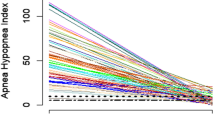Abstract
To evaluate role of overnight domiciliary apneagraph in diagnosing severity of sleep apnoea. Prospective audit of 37 patients with Epworth sleepiness score over ten and all patients with history of sleep apnoea presenting to ENT outpatient clinic investigated with apneagraph. Data analysed initially with pulse oximetry findings alone followed by analysis with full apneagraph findings. Results: Data analysed with pulse oximetry alone showed 31 patients to be simple snorers, but on analysis with apneagraph, 11 of these were shown to be suffering from moderate and one with severe sleep apnoea. There was no correlation between Epworth sleepiness score and severity of sleep apnoea. Conclusion: Management plan can be more evidence based by using apneagraph as a mini sleep study in investigating patients with history of obstructive sleep apnoea. Apneagraph could also be used in diagnosing the level of obstruction in snorers; however, this aspect needs further studying.
Similar content being viewed by others
References
Counter P, Wilson JA (2004) Management of simple snoring. Sleep Med Rev 8:433–441
British Lung Foundation. August 2006; www.healthinparliament.org.uk/lungd/SLEEP
Lung report III. 2003. British lung foundation
Tvinnereim M, Mitic S, Hansen RK (2007) Plasma radiofrequency preceded by pressure recording enhances success for treating sleep-related breathing disorders. Laryngoscope 117:731–736
Dyken ME, Somers VK, Yamada T, Ren Z, Zimmerman B (1996) Investigating the relationship between stroke and obstructive sleep apnoea. Stroke 27:401–407
Peppard PE, Young T, Palta M, Skatrud J (2000) Prospective study of the association between sleep-disordered breathing and hypertension. N Engl J Med 342:1378–1384
Haniffa M, Lasserson TJ, Smith I (2004) Interventions to improve compliance with continuous positive airway pressure for obstructive sleep apnoea. Cochrane Database Syst Rev 4:CD003531
Singh A, Al-Reefy H, Hewitt R, Kotecha B (2008) Evaluation of apneagraph in diagnosis of sleep related breathing disorders. Eur Arch Otorhinolaryngol 265(12):1489–1494
Johns M (2000) European Sleep Research Society. J Sleep Res 9:5–11
Kapoor PKD, Rao S, Izzat M, Kumar N (2002) Audit of somnoplasty for snoring. The Surgeon (abstract) 47(4):648
Conflict of interest
The authors declare that they have no conflict of interest.
Author information
Authors and Affiliations
Corresponding author
Rights and permissions
About this article
Cite this article
Achar, P., Kumar, B.N. Can Apneagraphy Change Our Approach in Management of Snoring and Sleep Apnoea?. Indian J Otolaryngol Head Neck Surg 66 (Suppl 1), 110–114 (2014). https://doi.org/10.1007/s12070-011-0344-1
Received:
Accepted:
Published:
Issue Date:
DOI: https://doi.org/10.1007/s12070-011-0344-1




